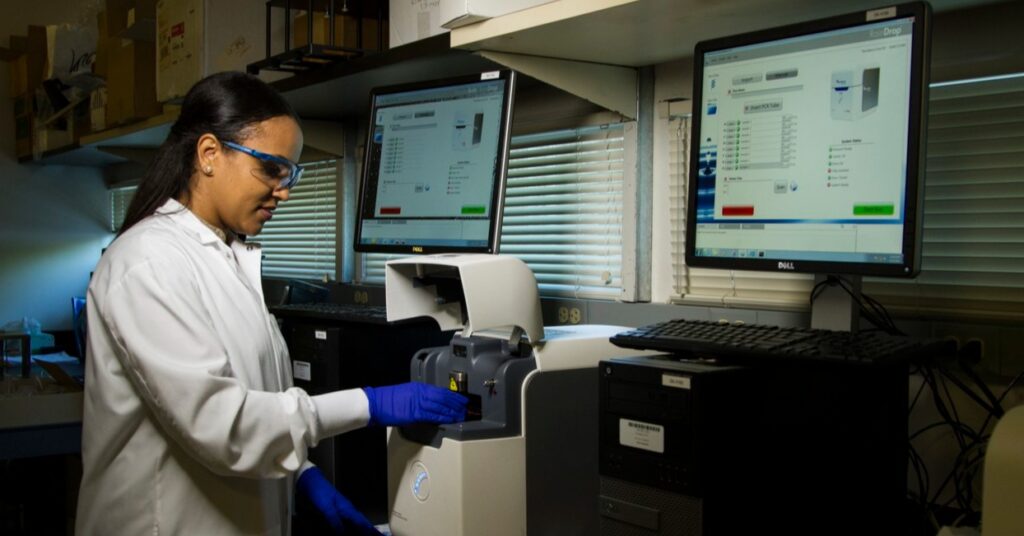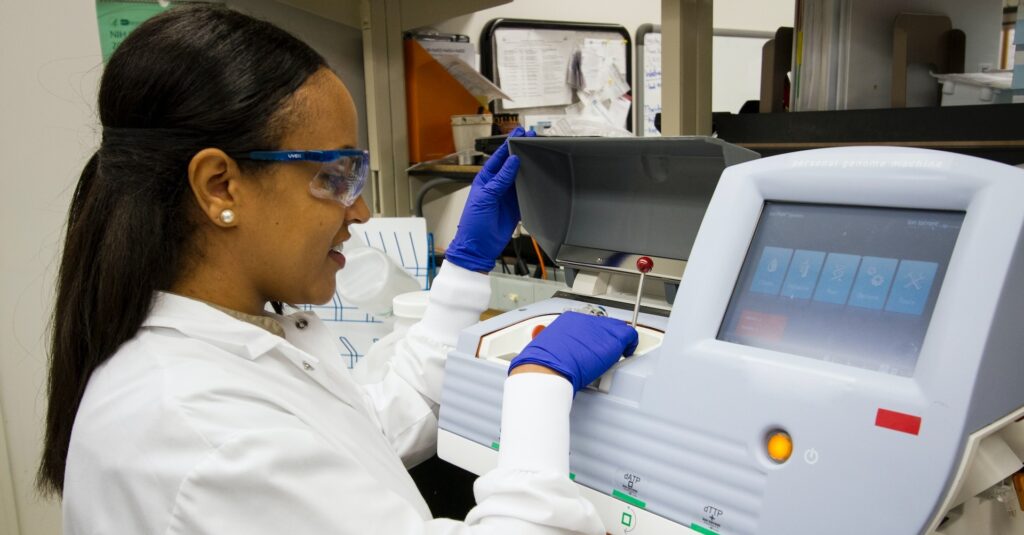
What Is the Epidemiological Triangle?
The epidemiological triad or triangle is an organized methodology used [...]

In order to understand neuro-optometry, one must first understand the complexities of general optometry. A general optometry practice schedules eye exams and testing for patients to arrive at the best treatment plans. They prescribe corrective eyeglasses or contact lenses to patients who need them. Optometrists also scan for ocular diseases and age-based vision problems during these comprehensive exams. In this way, optometry functions much like primary care, with plenty of diagnostic variety offered in the treatment of everyday symptoms and complaints.
With good optometry care and a properly functioning visual system, patients can go about their days without the distraction of any visual processing dysfunction. Some patients, however develop rarer, more challenging conditions than a general optometrist can treat. They need a specialist.
Such unusual eye conditions can be the direct result of traumatic brain injuries (TBIs) from sports, motor vehicle accidents, or other injuries. The American Speech-Language-Hearing Association reports that in the United States, “children ages 0-4 years had the highest estimated annual rates of TBI-related emergency room visits (1,256 per 100,000), followed by adolescents ages 15-19 (757 per 100,000)”. Nearly 70 percent of teens diagnosed with a concussion suffer from a functional vision problem.
A neurological event such as an acquired brain injury can result in post-concussion symptoms that include blurred vision, visual field loss, or impaired depth perception. In the absence of any recent trauma, these symptoms may indicate non-injury related disabilities or conditions such as multiple sclerosis, Parkinson’s disease, cerebral palsy, or a cerebrovascular accident such as a stroke. Regardless of the cause, persistent visual dysfunction can induce mental as well as physical stress in patients. What begins as a visual problem or symptom can become something much more.
Optometry needs capable neuro-optometrists to treat such patients. Why become a neuro-optometrist? This article digs into the reasons by addressing:
Neuro-optometrists administer visual processing evaluations to measure perceptual or oculomotor function, conduct ocular health examinations, and measure visual field, eye movement, and eye strain. Brain injury, disease, infection, and trauma can all cause vision problems which, without treatment, will continue to impact a patient’s mental and physical health throughout their lifetime. Neuro-optometry examines how a patient’s vision and eye movements are affected by any atypical neurological conditions or events.
Neuro-optometrists provide their patients with rehabilitation therapy and neuro-optometric vision rehabilitation in coordinated care with neuro-ophthalmologists and other healthcare professionals. They provide treatment like selective occlusion, specialty lens tints and coatings, prisms, and other optometric vision therapies to improve visual acuity.
Neuro-optometrists diagnose and treat vision problems that result from physical ailments or injuries that manifest in neurological conditions. They use eye exams and testing procedures to determine the severity of the patient’s condition and design neuro-optometric rehabilitation programs to strengthen visual skills and improve symptoms and function.
Neuro-optometrists treat conditions like diplopia (double vision), convergence or accommodation insufficiency, binocular vision dysfunction, strabismus, and other visual perception deficits with neuro-optometric rehabilitation techniques.
They work closely with occupational therapists, vision therapists, cognitive psychologists, and other mental health practitioners (when necessary) to strengthen independent living skills and provide a holistic approach to patient care.
Professor Mriganka Sur of MIT’s Department of Brain and Cognitive Sciences explains that because “half of the human brain is devoted directly or indirectly to vision, understanding the process of vision provides clues to understanding fundamental operations in the brain.” With so much of the brain dedicated to visual integration, neuro-optometry becomes an important player in identifying, monitoring, and treating brain injuries.
Neuro-optometry is expanding as more is understood about vision and its relationship to other brain functions. It is among the specializations available to those who have completed a Doctor of Optometry (OD) degree.
Neuro-optometry is a sub-specialization of optometry offered through residency programs at some optometry schools. Alternatively, training in neuro-optometry comes after successful completion of an optometry doctorate program, once licensing is complete.
The best way to train in this speciality if you are already in practice is to find a mentorship opportunity, or to take part in a fellowship program with either the College of Optometrists in Vision Development (COVD) or with the Neuro-Optometric Rehabilitation Association (NORA). These credentialing fellowships can take from four to ten years to complete; they include research, presentation, case analysis, and publishing opportunities.
Getting your doctor of optometry degree typically takes four years of full-time study at one of the 23 accredited optometry schools in the United States. This training follows a four-year bachelor’s degree, typically focused on the math and science required to master optometry. Specialization in neuro-optometry can take anywhere from four to ten additional years.
Admissions requirements are program-specific, but typically look a lot like the list for admission to the New England College of Optometry. Prerequisite courses include classes (with above a C grade) in biology, physics, chemistry and organic chemistry with labs, biochemistry, microbiology, calculus, statistics, psychology, and English.
This coursework prepares students for the entrance exam required for all applicants—the Optometry Admissions Test (OAT)—which is designed to measure preparedness for the Doctor of Optometry program. Alongside passing exam results, you also need at least 20 hours shadowing an optometrist in practice, as well as two professional letters of recommendation.
Students at the New England College of Optometry, an exemplary OD program, undertake coursework in anatomy and physiology, development of vision, cell biology, clinical reasoning, pharmacology, public health, surgical and laser procedures, and low-vision rehabilitation across a lifespan. NECO offers concentrations in pediatric optometry, cornea and contact lens, and low vision rehabilitation. Graduates may also pursue fifth-year residencies and fellowships.
Each state determines its own requirements for licensure, with licenses granted by the state regulatory board. Requirements, application fees and processes all vary, with specific requirements for clinical hours and experience, so graduates need to research how to qualify for licensure in the state where they wish to practice.
Indeed lists the average base salary for optometrists as $124,756/year. Neuro-optometrists earn average base salaries 44 percent higher, making their base average income just over $179,000. Clearly, the specialization of neuro-optometry can be lucrative for optometrists who wish to pursue it.
Because optometry requires a lot of in-person training and hands-on experience, no school currently offers a fully online Doctor of Optometry program. That doesn’t mean you can’t acquire the majority of an optometry education remotely.
The New England College of Optometry will be enrolling its first hybrid program students in the fall of 2023. This new venture is the first of its kind for optometry and will utilize new technologies and virtual reality to help expand optometry education beyond the campuses of the 23 accredited optometry schools currently operating in the US.
Questions or feedback? Email editor@noodle.com

The epidemiological triad or triangle is an organized methodology used [...]

A family nurse practitioner (FNP) provides comprehensive primary health care [...]

FNPs practice in a broad range of health care settings. [...]

Some epidemiologists assist pharmaceutical companies in developing safer medicines. Some [...]

A Bachelor of Science in Nursing (BSN) is a four-year [...]
Categorized as: Optometry, Nursing & Healthcare